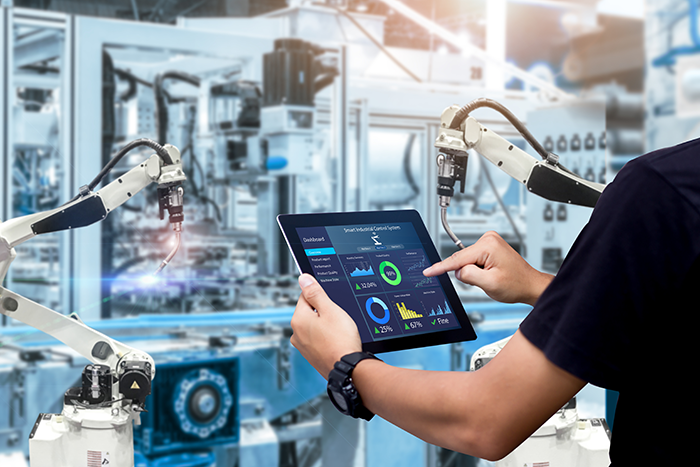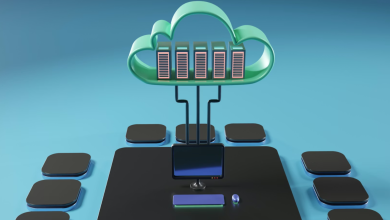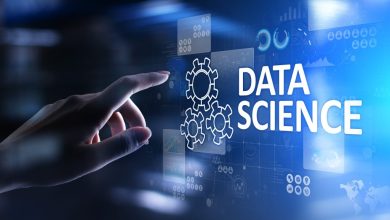
Introduction: the rise of servitization
Servitization is transforming traditional business models by focusing on usage rather than product sales. According to a study by Syncron, revenue from outcome-based service models is expected to grow from 25% to 41% by 2028.
This evolution is made possible by the integration of the Internet of Things (IoT) and artificial intelligence (AI), which enable continuous data collection and analysis, facilitating the transition to smarter services.
IoT as foundation of servitization
The global IoT market is estimated at $714.48 billion in 2024 and is expected to reach $4.06 trillion by 2032 (Demand Sage, 2025). These staggering figures clearly illustrate the fact that IoT forms the basis of servitization by enabling real-time data collection from products.
Data from connected objects provides increased visibility into product usage, wear and tear, and environment, allowing companies to make commitments based on measurable and verifiable results, which is essential.
To succeed in this transition, manufacturers and machine builders can rely on IoT platforms—such as dDruid, for example—to centralize and exploit connected data in order to develop new services. Leveraging an existing platform allows companies to scale their service offerings more quickly and securely. Our recommendation: choose a robust solution with strong customization potential, so that it can be fully aligned with your vision and the evolution of your value proposition.
AI: transforming data into value
The global market for AI in IoT was valued at $87.51 billion in 2024 and is expected to reach approximately $161.93 billion by 2034, with a CAGR of 6.35% (Precedence Research, 2025).
AI makes it possible to leverage collected IoT data to anticipate needs and optimize performance. This capability is essential to supporting servitization, as it ensures optimized availability and performance of the services offered.
Use cases for servitization thanks to AI and IoT
The ability of AI to transform IoT data into value is already evident in many areas. Each sector is developing specific uses. In mobility, vehicles are becoming connected service platforms. Agriculture, for its part, is benefiting from “as-a-service” solutions that optimize resource use and support farm sustainability.
Healthcare: personalized and predictive monitoring
In the medical field, the integration of AI and IoT is transforming healthcare devices into smart services. Wearable sensors and connected medical devices continuously collect vital data such as heart rate, blood sugar levels, and sleep quality. AI analyzes this information to detect anomalies, anticipate complications, and personalize treatments. This approach allows patients to benefit from proactive monitoring, reduces unexpected hospitalizations, and optimizes the effectiveness of care, while providing healthcare professionals with accurate data to improve their clinical decisions.
Smart buildings: optimizing usage and consumption
Smart buildings are a perfect example of servitization applied to real estate. Thanks to IoT sensors and AI, it is now possible to monitor energy consumption, air quality, space occupancy, and the condition of technical equipment in real time. AI transforms this data into recommendations and automated actions: air conditioning adjustment, optimized lighting, predictive maintenance of installations. Occupants thus enjoy increased comfort and more responsible consumption, while managers maximize energy performance and equipment lifespan, transforming the building into a smart and efficient service.
Industry: towards the “Machine-as-a-Service” model
The industrial sector is particularly affected by servitization.
In fact, servitization translates into “machine-as-a-service” offerings in industry: the integration of IoT, cloud, big data, and AI improves product quality, flexibility, and competitiveness for companies.
As a result, IoT platforms enable real-time analysis of equipment data, facilitating predictive maintenance and process optimization in industry.
AI completes the process by detecting anomalies, predicting failures, and adjusting operating parameters to maximize efficiency.
Benefits for customers and suppliers
AI- and IoT-driven servitization benefits both customers and suppliers. Customers enjoy a seamless experience, personalized services, and guaranteed performance, reducing financial risk. For suppliers, this model paves the way for recurring revenue and increased customer loyalty.
AI and IoT also provide detailed insight into actual product usage, improving R&D and future offerings.
Strategic implications: turning technology into competitive advantage
The integration of AI and IoT into business models is not merely a technological upgrade—it represents a fundamental strategic lever. Companies that leverage continuous data insights can anticipate customer needs, optimize resource allocation, and innovate faster than competitors. This enables the creation of differentiated, value-added services that enhance customer loyalty and open new revenue streams.
Moreover, AI and IoT facilitate sustainable operations by reducing energy consumption, minimizing waste, and improving product lifecycle management, aligning business strategy with environmental and social responsibility goals. In this way, servitization becomes a core component of long-term competitive advantage.
Conclusion: transforming servitization into a strategic advantage
The combination of AI and IoT is accelerating the shift from product to service, redefining traditional business models. These technologies enable continuous data analysis, guaranteed results, and personalized experiences, increasing perceived value for customers and opening up new opportunities for suppliers.
Servitization is not just a technological evolution: it is a true economic paradigm shift. Companies can offer usage- and value-centric models, strengthen their competitiveness, and build lasting customer loyalty while taking full advantage of AI and IoT.




